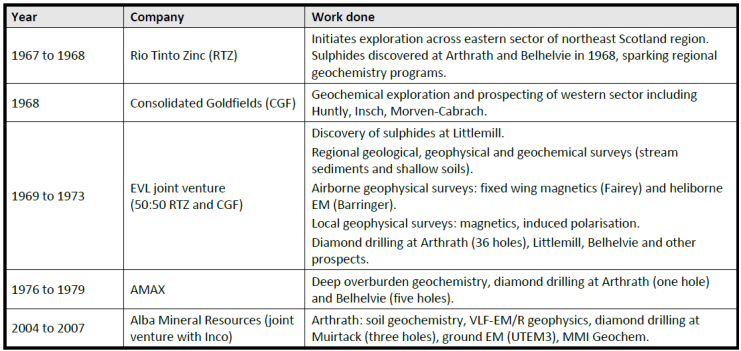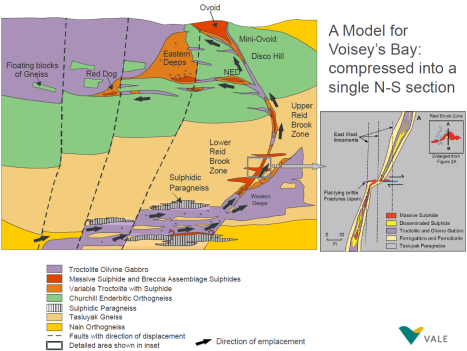North East Scotland
Regional Geology
The geology of North East Scotland features a suite of mafic-ultramafic intrusive rocks named the "Younger Gabbros". These gabbroic rocks were emplaced into the lower to mid crust around 470 million years ago during the Grampian Episode of the Caledonian Orogeny (a series of mountain-building events that occurred roughly 490–390 million years ago caused by the closure of the Iapetus Ocean).
The Younger Gabbros are interpreted to have formed at the margin of the Laurentia continent when subducting oceanic crust triggered partial melting of the mantle, and the resulting magmas were emplaced into the Dalradian metasedimentary country rocks via crustal scale structures. Multiple large intrusions occur within an area of approximately 100 by 100 kilometres.
This geological environment is favourable for the formation of the "magmatic sulphide" type of mineral deposit. Nickel-copper-cobalt sulphide deposits have been found in association with Younger Gabbros at three localities: Arthrath, Belhelvie and Littlemill.

Simplified geology of North East Scotland showing the locations of magmatic sulphide deposits.
Exploration history
The region was first explored by Rio Tinto (RTZ) and Consolidated Gold Fields from as early as 1967 (and as a joint venture, "EVL” from 1969) until 1973 for reef-type (layered intrusions) copper-nickel mineralisation. Sulphide deposits were discovered at Arthrath, Belhelvie and Littlemill during this time. Further exploration was carried out by American company AMAX in the late 1970s. Between 2004 and 2007, Arthrath was investigated by UK company Alba Mineral Resources including a brief joint venture with Canadian nickel miner INCO (until INCO's takeover by Vale).

Deposit Model
Magmatic nickel-copper sulphide deposits form as the result of the segregation and concentration of droplets of liquid sulphide from mafic or ultramafic magma and the partitioning of chalcophile elements into these from the silicate magma. Magma conduits as open systems provide the perfect environment for the protracted flow-through of large volumes of fertile magmas and extensive concentration of these sulphide liquids. Sulphides can accumulate to form high value deposits in various settings within the conduit.
This conduit-related model was developed following the discovery of Voisey’s Bay in the 1990s. Since this came after the Rio Tinto / EVL exploration in North East Scotland, the features of this new model were not considered in the EVL assessments. Conduit-related deposits are now recognized globally and in addition to Voisey’s Bay (Labrador) include: Kabanga (Tanzania), Eagle (Michigan), Jinchuan (China), Nova-Bollinger (Australia) and Tamarack (Minnesota).

Deposit model for Voisey's Bay, Canada (Lightfoot, 2011).

